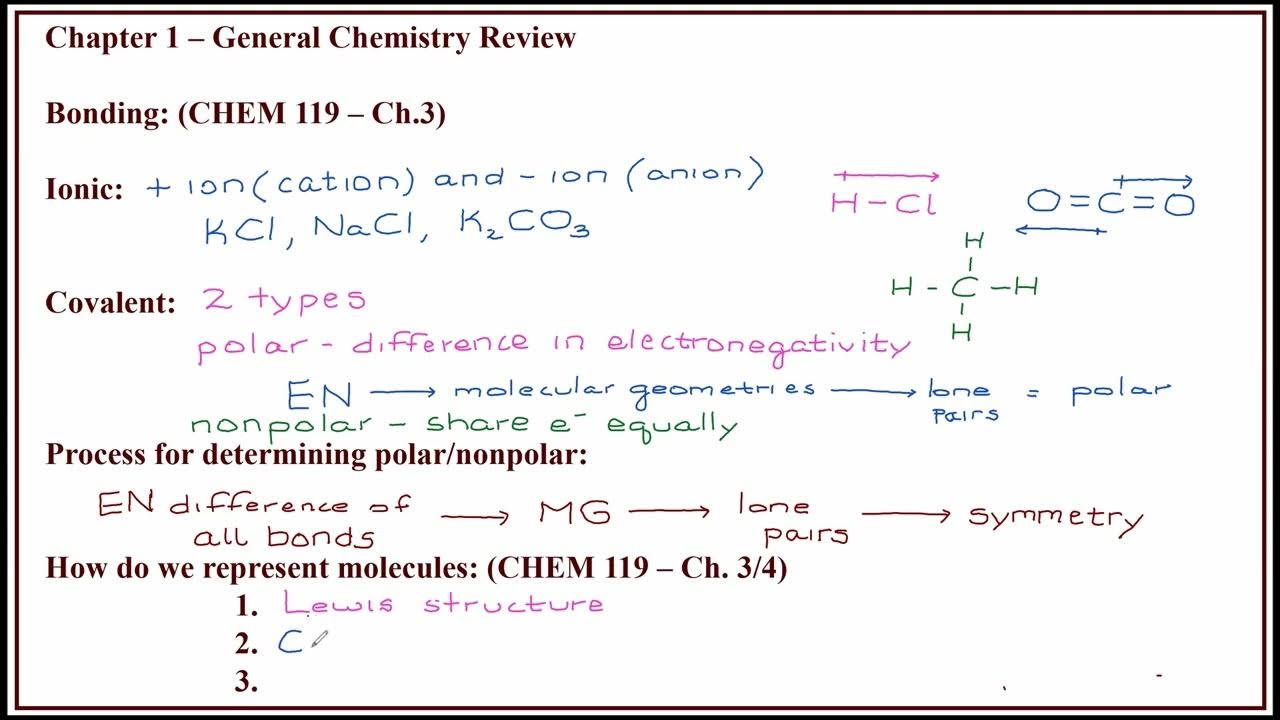Advanced Organic Chemistry: Transition Metal Catalyzed C-H Functionalization
Summary
TLDRIn this lecture, Joshua Poilo explores transition metal-catalyzed CH functionalization, focusing on methods to selectively activate and functionalize stable CH bonds. He discusses inner and outer sphere mechanisms, factors influencing site selectivity, and strategies like concerted metalation-deprotonation (CMD) and ambiphilic metal ligand activation (AMLA). The lecture highlights applications in carbon-carbon and carbon-heteroatom bond formation, as well as its use in natural product synthesis. Joshua also covers recent developments in CH borylation, halogenation, and emerging photochemical/electrochemical strategies. Overall, the lecture provides a comprehensive foundation for understanding CH activation chemistry in organic synthesis.
Takeaways
- 😀 Transition metal-catalyzed CH functionalization is a powerful strategy in organic synthesis, enabling the introduction of functional groups into molecules.
- 😀 CH activation refers to the process of breaking a CH bond through interaction with a transition metal, forming a carbon-metal bond.
- 😀 Two main types of mechanisms exist in CH functionalization: inner sphere mechanisms, involving organometallic intermediates, and outer sphere mechanisms, which do not involve such intermediates.
- 😀 Outer sphere mechanisms are most reactive towards sp3 CH bonds due to lower bond dissociation energies, while inner sphere mechanisms are more effective for sp2 CH bonds.
- 😀 The identity of the metal catalyst, ligands, and reaction conditions significantly influence the selectivity and reactivity of CH activation.
- 😀 Steric effects can be used to control site selectivity in CH functionalization, where bulky ligands can hinder reactivity at certain sites.
- 😀 Directing groups, commonly used in inner sphere mechanisms, can help achieve site selectivity by bringing the catalyst close to the desired CH bond through agostic interactions.
- 😀 CH functionalization can be employed to form carbon-carbon bonds through various methods, including oxidative coupling reactions that require an external oxidant to be catalytic.
- 😀 CH amination reactions use CH activation to form CN bonds, often requiring external oxidants unless nitrogen sources are pre-oxidized.
- 😀 CH oxygenation reactions use both inner sphere and outer sphere mechanisms to introduce oxygen functionality to CH bonds, with common oxidants like molecular oxygen and peroxides.
- 😀 Transition metal-catalyzed CH functionalization has been applied in the synthesis of complex natural products and in various organic reactions, such as CH boration and halogenation.
Q & A
What is the main topic of the lecture presented by Joshua Poilo?
-The main topic of the lecture is transition metal-catalyzed CH functionalization reactions, focusing on their mechanisms, site selectivity, and applications in organic synthesis.
What is the difference between CH functionalization and CH activation?
-CH functionalization refers to the overall transformation of replacing a CH bond with another element or functional group, while CH activation specifically refers to the breaking of the CH bond through interaction with a transition metal, resulting in the formation of a carbon-metal bond.
What are the two general categories of mechanisms for CH functionalization reactions?
-The two general categories are inner sphere mechanisms and outer sphere mechanisms. Inner sphere mechanisms involve the formation of an organometallic intermediate, while outer sphere mechanisms do not form such an intermediate and rely on either radical or concerted means.
How do ligands impact the mechanism of CH activation?
-Ligands can impact CH activation by either assisting in the activation step or altering the reactivity of the catalyst. For example, bifunctional ligands with heteroatoms like phosphine oxide or carboxylate can help facilitate CH bond activation through concerted metalation-deprotonation (CMD) or ambiphilic metal-ligand activation (AMLA).
What role do steric effects play in CH functionalization reactions?
-Steric effects can influence selectivity in CH functionalization by controlling which CH bonds react. Bulky ligands around the metal center can hinder reactivity at sterically crowded sites, even overriding intrinsic reactivity differences between sites.
What are directing groups, and how do they aid in CH functionalization?
-Directing groups are functional groups that bring the metal catalyst close to the desired CH bond, often through the formation of an agostic complex. This enhances the selectivity of the reaction by controlling which CH bond is activated, particularly in inner sphere mechanisms.
Why is site selectivity a challenge in CH functionalization reactions?
-Site selectivity is challenging because organic compounds often contain multiple similar CH bonds, and many of these bonds have similar reactivity. Achieving selective activation of a specific CH bond requires overcoming the thermodynamic stability of the CH bond and controlling reactivity through catalyst design, steric effects, and directing groups.
What is the role of oxidants in CH functionalization reactions?
-Oxidants are often required in CH functionalization reactions, particularly when the reaction involves the formal oxidation of the carbon being functionalized, such as in CH amination or oxygenation reactions. Oxidants help regenerate the catalyst and enable catalytic cycles to continue.
Can CH functionalization be used for the synthesis of natural products?
-Yes, CH functionalization has been used in the synthesis of natural products. Examples include the use of directed CH alkenol reactions for enantioselective synthesis and CH alkylation reactions to form key intermediates in alkaloid synthesis.
What are some challenges associated with oxidative CH functionalization reactions?
-Challenges in oxidative CH functionalization reactions include the need for external oxidants to turn over the catalytic cycle, as well as controlling the reaction conditions to ensure selective functionalization of the desired CH bond without undesirable side reactions.
Outlines

This section is available to paid users only. Please upgrade to access this part.
Upgrade NowMindmap

This section is available to paid users only. Please upgrade to access this part.
Upgrade NowKeywords

This section is available to paid users only. Please upgrade to access this part.
Upgrade NowHighlights

This section is available to paid users only. Please upgrade to access this part.
Upgrade NowTranscripts

This section is available to paid users only. Please upgrade to access this part.
Upgrade NowBrowse More Related Video
5.0 / 5 (0 votes)





